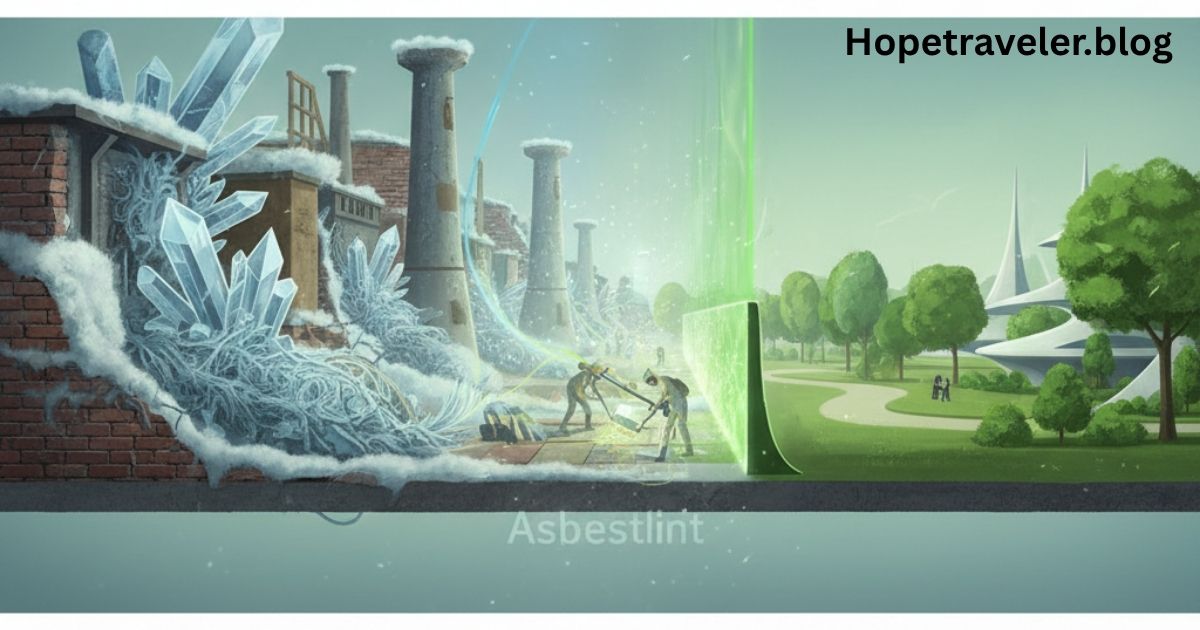The term Asbestlint is often associated with asbestos-based materials, a category of naturally occurring silicate minerals once widely used for insulation and fireproofing. While Asbestlint itself may not appear as a common English dictionary term, it is likely derived from or related to asbestos lint—a byproduct of asbestos fiber processing. Understanding this term requires exploring asbestos itself, its history, usage, and the reasons why it became one of the most controversial materials in modern industry.
This comprehensive article explores the background, industrial use, health effects, and current regulations surrounding Asbestlint, with verified insights and references from relevant Wikipedia sources.
What Is Asbestlint?
Asbestlint appears to be a compound form of the words asbestos and lint, which together describe loose fibrous particles of asbestos that accumulate during manufacturing or handling processes. These particles—essentially asbestos dust—can be extremely hazardous if inhaled.
Asbestos itself is a group of six naturally occurring minerals composed of fine, heat-resistant fibers. The term “asbestos” comes from a Greek word meaning inextinguishable, referring to its resistance to heat and fire. According to Wikipedia’s article on Asbestos, these fibers were once prized for their durability, insulation properties, and resistance to corrosion.
Asbestlint likely refers to the residual fibrous material, dust, or lint produced when asbestos-containing materials are cut, scraped, or handled.
Historical Background of Asbestos Use
The history of asbestos dates back thousands of years. Ancient civilizations, including the Greeks and Romans, used asbestos fibers in textiles and building materials. During the 19th and 20th centuries, asbestos became one of the most widely used industrial materials due to its affordability and versatility.
Industries used asbestos for insulation in buildings, ships, automobiles, and even household appliances. It was often mixed with cement or woven into fabrics to create fire-resistant materials.
However, by the mid-20th century, researchers discovered the severe health hazards associated with asbestos exposure, especially the fine airborne particles—similar to what Asbestlint represents.
Composition and Properties
Asbestos minerals belong to two main categories:
- Serpentine Asbestos (Chrysotile):
- The most common type, with long, curly fibers.
- Used in roofs, ceilings, walls, and brake linings.
- Amphibole Asbestos (Crocidolite, Amosite, etc.):
- Straight, needle-like fibers.
- More brittle and more hazardous when airborne.
Asbestlint would typically consist of these fibers in loose, unbound form—making it even more dangerous to handle. These microscopic fibers can remain suspended in the air for long periods, easily entering the human respiratory system.
Health Risks of Asbestlint
Exposure to asbestos dust or lint poses serious health hazards. When inhaled, asbestos fibers can lodge in the lungs, leading to scarring, inflammation, and life-threatening diseases.
According to Wikipedia’s page on Asbestos-related diseases, prolonged exposure can cause:
1. Asbestosis
A chronic lung disease caused by inhaling asbestos fibers, resulting in scarring of lung tissue, breathing difficulty, and persistent coughing.
2. Mesothelioma
A rare and aggressive form of cancer affecting the lining of the lungs or abdomen. Mesothelioma is almost exclusively linked to asbestos exposure.
3. Lung Cancer
Individuals exposed to Asbestlint or asbestos fibers have a significantly higher risk of developing lung cancer, especially if they are also smokers.
4. Pleural Disorders
These include pleural plaques, thickening, and effusion (fluid buildup), which impair lung function.
The danger lies in the microscopic size of asbestos fibers, which allows them to penetrate deep into the lungs and remain there for decades, continuing to damage tissue.
Occupational Exposure to Asbestlint
During the 20th century, thousands of workers were exposed to asbestos lint in factories, construction sites, and shipyards. Common occupations at risk included:
- Insulation installers
- Shipbuilders
- Plumbers and electricians
- Brake and clutch manufacturers
- Miners and millers
In factories that processed asbestos textiles, the fine fibers—similar to lint—filled the air. Without proper ventilation or protective equipment, workers inhaled these fibers daily.
The Occupational Safety and Health Administration (OSHA) later established strict guidelines for workplace exposure limits, but by then, millions had already been affected.
Environmental Contamination
Beyond occupational exposure, Asbestlint also contributes to environmental pollution. Improper disposal of asbestos waste can contaminate soil and water. Old buildings containing asbestos insulation release fibers into the environment during demolition or renovation.
Once released, these fibers can remain airborne for long durations, posing risks to surrounding communities. Environmental agencies now enforce regulations on asbestos removal, known as abatement, to minimize such contamination.
For further details, see Asbestos abatement on Wikipedia.
Asbestlint in Modern Times
While the use of asbestos has declined sharply since the 1980s, Asbestlint remains a problem in aging infrastructure and industrial cleanup sites. Many countries have banned asbestos entirely, but in some regions, limited use still persists in controlled conditions.
Countries like the United States, Canada, Australia, and most of the European Union enforce strict regulations on asbestos handling, removal, and disposal. However, in developing nations, asbestos-based materials are still used in roofing, insulation, and cement products due to their low cost.
Asbestos lint, dust, and residue continue to be major health and environmental concerns where older construction or industrial operations remain unregulated.
Regulation and Safety Guidelines
To manage asbestos safely, governments and health organizations have implemented comprehensive guidelines:
1. Identification and Assessment
Before renovation or demolition, buildings must be inspected for asbestos-containing materials (ACMs). Certified professionals identify sources of Asbestlint and determine the safest removal method.
2. Controlled Removal and Disposal
According to Environmental Protection Agency (EPA), asbestos materials must be handled only by licensed contractors. Removal areas are sealed off, and air monitoring ensures that no fibers escape into the environment.
3. Personal Protective Equipment (PPE)
Workers dealing with Asbestlint must wear respirators, disposable suits, gloves, and eye protection to prevent inhalation or skin contact.
4. Safe Disposal
Asbestos waste, including lint, must be double-bagged, labeled, and disposed of at approved hazardous waste facilities. Dumping asbestos waste illegally can result in severe legal penalties.
Alternatives to Asbestlint Materials
In response to asbestos-related health risks, industries have developed safer alternatives for insulation and construction. These include:
- Fiberglass – made from spun glass fibers, non-carcinogenic.
- Mineral Wool – heat-resistant, used in building insulation.
- Cellulose Fiber – made from recycled paper, eco-friendly and safe.
- Polyurethane Foam – commonly used in household insulation.
These alternatives mimic the fire-resistant and insulating properties of asbestos without posing the same health hazards.
Public Awareness and Global Efforts
Global health organizations such as the World Health Organization (WHO) have called for a total ban on asbestos production and use. Many countries have joined this initiative, yet millions of tons of asbestos remain in existing structures.
Public education plays a crucial role in preventing exposure. Homeowners, workers, and communities must be informed about the risks of asbestos lint and the importance of professional abatement during renovations.
Conclusion
Asbestlint, or asbestos lint, represents one of the most dangerous forms of asbestos exposure—fine, airborne fibers that can cause irreversible health damage. Understanding its risks and handling it responsibly is essential for both workers and the general public.
While asbestos once symbolized industrial progress, it now serves as a warning about the hidden dangers of unregulated materials. Through awareness, regulation, and the adoption of safer alternatives, societies can prevent future generations from suffering the devastating effects of asbestos-related diseases.
The key to a safer world lies in vigilance, education, and the responsible management of asbestos remnants—ensuring that Asbestlint remains a lesson from history, not a recurring threat.




